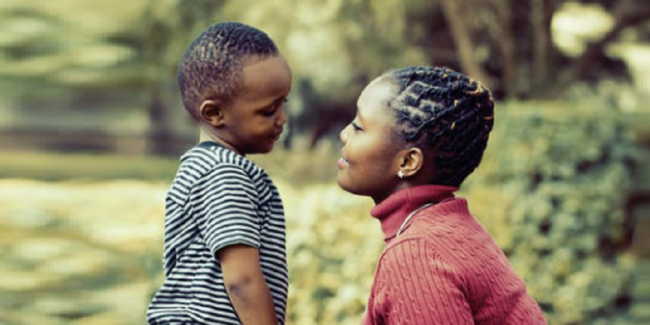
In 1958, the British Psychologist John Bowlby first formulated an attachment theory that explores separation anxiety and the distress children experience when separated from their primary caregiver or attachment figure.
Within this attachment theory, infant behavior is primarily associated with seeking proximity to an attachment figure when they are in a stressful situation. Infants will normally become attached to adults who (within social interactions) they feel are being sensitive or responsive to them, and are seen as consistent caregivers from the first six months to two years of age. And as the child grows and starts to explore their world, they use their attachment figures as a secure base so they can safely go off, explore and then return. Therefore, the attachment figure functions as a safe haven, or as a source of comfort and protection in the face of environmental threats.
The attachment theory highlights the human need for physical contact and emotional security in childhood. So considering just how universally this need is and its implications for survival, it is not surprising that children naturally become attached to the people who care for them.
Children build different attachment relationships with the range of different caregivers or attachment figures they interact with, and the quality of each relationship depends on the quality of the interaction and care they feel they receive.
Attachment disorder has been linked to children who experience distress due to the negative or confusing behavior of their parents or primary caregiver. This can be where the child has unresolvable internal conflict because the parent or guardian generates feelings of fear or apprehension.
This can be where their source of appeasement is now also seen as their source of fear, so the child is unable to simultaneously seek out and flee their attachment figure. In this situation, a secure attachment to the parent or guardian is unable to guarantee well-being, but it can promote resilience and increase their resistance to stress.
We know adolescence can be a driving force of change within the home and may result in a turbulent time for many young people, but will also have a major impact on the people around them. Confronted with their changing child, many parents can feel lost or disoriented. Many will recognize this can be a difficult time, and will want to fully support their child and family through this process, but may fear they will overlook an underlying problem. This may therefore drive them to seek out some professional guidance from a coach or therapist.
If approached by a parent or guardian looking for support to better understand changes within the home or develop some positive parenting techniques, it is important to first clarify if the focus of the coaching will be towards the young person or the parent. Parents and guardians can often seek out professional help for themselves if they are questioning their own parenting style or if they are starting to experience conflict within the home.
If you would like to support parents and guardians to improve communication and understanding within the family home, check out our exclusive ebook in the online shop:
Coaching Parents and Guardians – Learn how coaching can help parents and guardians understand the changing dynamics within the home and find solutions that support children and young people
Please note – Please include a reference and link back to this original blog if you wish to copy or share anything we have written: (cc) MyCoachingToolkit.com – 2022